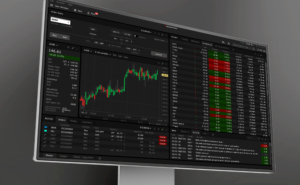Retail sales rose by 0.7% month-on-month (m/m) in March, adding to February’s upwardly revised 0.9 % gain (previously 0.6%). The increase was higher than the consensus forecast calling for a more modest increase of 0.4%
Trade in the auto sector was down -0.7% m/m, reflecting a decline at motor vehicle dealers (-0.9%), which was only partly offset by an increase in sales at automotive parts and accessory stores (1.9%).
Sales at gasoline stations rose a sizeable by 2.1% m/m, largely reflecting an uptick in gas prices. The building materials and equipment category rose a more modest 0.7% m/m.
Sales in the retail sales “control group”, which excludes the above volatile components (autos, building materials and gas) and is used to estimate personal consumption expenditures (PCE), rose significantly on the month (1.1%) after rising by 0.3% m/m in February (revised from 0% previously).
- Among the control group, the largest positive contributions came from non-store retailers (2.7% m/m), miscellaneous store retailers (2.1% m/m) and department stores (1.1% m/m).
- The largest declines were at sporting goods stores (-1.8% m/m) and clothing and accessory stores (-1.6% m/m).
Food services & drinking places – the only services category in the retail sales report – rose by 0.4% m/m.
Key Implications
Once again U.S. consumers showed resilience by boosting retail spending in March and closing out the first quarter on an upswing. With sales picking up in the last two months, it was just sufficient to overcome the steep decline (-0.9%) in January. As such retail spending finished out Q1 with a marginal increase of 0.2% q/q (annualized). This is a sizeable step down from a 2.3% gain in Q4 2023. As the labor market continues to rebalance in 2024 and wage gains cool, spending is expected to follow a similar path.
That said, given the recent string of hotter-than-expected CPI inflation readings, Fed policymakers are unlikely to welcome the continued showing of resilient consumer spending evident in today’s report. Worth watching is the strength of spending in the control group as this could show up in higher PCE spending. As FOMC members have noted on numerous occasions, the bar to cut rates depends on signs that inflation is moving sustainably toward two percent. While price movements on the goods side of the economy have been relatively tame, continued strong retail spending could upend that. As it stands, our call is currently for a July cut, but continued inflation persistence poses a risk to this view.









